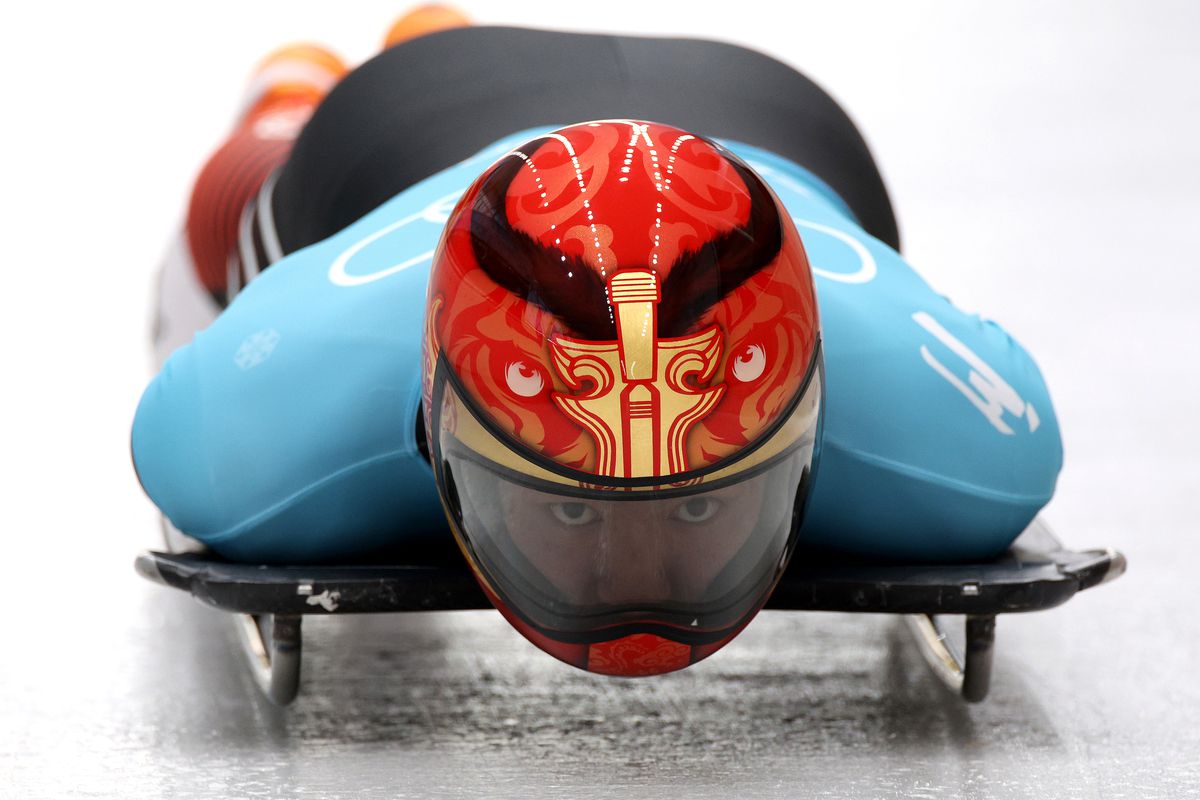
Skeleton racing might sound like a term straight out of a horror movie, but it is actually an exhilarating winter sport that takes place on a narrow ice track. In this adrenaline-pumping sport, athletes lie face-down on a small sled and race down the icy track, reaching astonishing speeds of up to 80 miles per hour.
But there is more to skeleton racing than just its thrilling nature. This sport, which has been a part of the Winter Olympics since 1928, has a rich history and is filled with captivating facts and stories. From its origins to the incredible athleticism required, skeleton racing is a fascinating world in its own right.
In this article, we will dive into the world of skeleton racing and explore ten captivating facts that will leave you in awe of this fast-paced and heart-pounding sport.
Key Takeaways:
- Skeleton racing, originating in the late 19th century, is a thrilling solo sport where athletes slide down icy tracks at speeds of up to 130 km/h, showcasing strength, agility, and mental resilience.
- Female athletes have excelled in skeleton racing, with women’s skeleton becoming an official Olympic event in 2002, contributing to the sport’s inclusivity and popularity.
The Origins of Skeleton Racing Date Back to the Late 19th Century
Skeleton racing traces its roots back to the late 19th century, where it emerged as a popular sport in St. Moritz, Switzerland. Originally known as “Cresta Run,” the sport involved sliding down an ice track on a simple sled-like vehicle. It gained its name “skeleton” due to the similarity of the early sleds to a human skeleton. Today, skeleton racing has evolved into a high-speed and adrenaline-fueled winter sport, captivating audiences worldwide.
The Track Length for Skeleton Racing is About 1,200 to 1,500 Meters
Skeleton racing tracks are designed to challenge the athletes’ speed, skill, and concentration. The tracks usually range from 1,200 to 1,500 meters in length, featuring twists, turns, and steep drops. Athletes navigate these icy tracks on their sleds, reaching speeds of up to 130 kilometers per hour. The high speeds and intense G-forces experienced during the races make skeleton racing a thrilling and heart-pounding spectacle.
Skeleton Racing Is a Solo Sport
Unlike other winter sports, skeleton racing is an individual sport where athletes compete against the clock. Each competitor takes turns sliding down the track alone, aiming to achieve the fastest time possible. The absence of direct competition during the runs adds to the suspense and tension of the sport, as one small mistake can determine the difference between victory and defeat.
Helmet Design and Aerodynamics Are Crucial in Skeleton Racing
Helmet design plays a critical role in skeleton racing. Athletes wear specially designed helmets that not only protect their heads but also contribute to their aerodynamic performance. The sleek and streamlined shape of the helmet reduces air resistance, allowing the athletes to maintain their speed and increase their chances of winning.
Skeleton Racing Requires Strength, Speed, and Agility
Competing in skeleton racing demands a unique combination of physical attributes. Athletes must possess both strength and power to generate explosive starts and control their sleds on the tracks. Additionally, speed and agility are essential to navigate the challenging curves and maintain a competitive edge in this fast-paced sport.
The Start is Crucial in Skeleton Racing
In skeleton racing, a powerful and explosive start can make all the difference. Athletes use specially designed starting blocks to launch themselves onto the track, propelling their sleds forward with maximum force. The start is a critical phase of the race, often determining the overall outcome and setting the tone for the rest of the run.
Female Athletes Excel in Skeleton Racing
Skeleton racing is one of the few sports where female athletes have achieved notable success and recognition. Women’s skeleton became an official Olympic event in 2002, opening doors for female athletes to showcase their skills and compete at the highest level. The compelling performances by female athletes have helped raise the popularity and inclusivity of skeleton racing.
Speed Suits Play a Vital Role in Skeleton Racing
Speed suits worn by skeleton racers are specially designed to reduce drag and improve performance. These form-fitting suits are made of high-tech materials that reduce air resistance, allowing athletes to slice through the air with minimal hindrance. The sleek and aerodynamic design of the suits helps maximize the racer’s speed and efficiency.
Skeleton Racing Requires Exceptional Focus and Mental Resilience
Success in skeleton racing relies not only on physical prowess but also on mental strength. Athletes must maintain exceptional focus while hurtling down the icy track at high speeds. The ability to make split-second decisions and remain mentally resilient in the face of intense pressure is crucial to achieving victory in this demanding sport.
Skeleton Racing Has Been an Olympic Sport Since 1928
Accounting for its rich history and popularity, skeleton racing has been an official Olympic sport since the 1928 Winter Olympics in St. Moritz, Switzerland. It provides a thrilling and captivating spectacle for both athletes and spectators, as athletes courageously navigate the icy tracks in pursuit of Olympic glory.
Conclusion
Skeleton racing is a thrilling sport that combines speed, skill, and bravery. From its origins in the Swiss Alps to its growth in popularity around the world, this sport has captivated both competitors and spectators alike. Whether you’re a fan of the adrenaline rush or simply fascinated by the science behind it, there’s no denying the excitement that skeleton racing brings.
With its heart-pounding descents, high speeds, and precision maneuvers, skeleton racing is not for the faint of heart. Athletes face immense physical and mental challenges as they navigate the icy tracks with just a sled and their body. It’s a display of agility, courage, and pure determination.
So, the next time you watch a skeleton race, remember these captivating facts and gain a newfound appreciation for the athletes who push their limits in pursuit of victory. Skeleton racing truly is a remarkable sport that continues to push boundaries and inspire awe.
FAQs
1. What is skeleton racing?
Skeleton racing is a winter sport where athletes race down an icy track on a small sled, headfirst. It requires skill, agility, and courage to navigate the sharp turns and high speeds.
2. How fast do skeleton racers go?
Skeleton racers can reach speeds of over 80 miles per hour. The combination of gravity, minimal drag, and a streamlined sled design allows them to achieve such high velocities.
3. What are the origins of skeleton racing?
Skeleton racing dates back to the late 19th century in the Swiss Alps. It began as a fun activity for tourists and quickly evolved into a competitive sport.
4. How is skeleton racing different from luge?
Skeleton racing and luge are similar in that they both involve racing down an icy track. However, in skeleton, athletes race headfirst while on a luge, athletes lie on their back with their feet facing forward.
5. Is skeleton racing dangerous?
Like any high-speed sport, skeleton racing does carry an element of risk. Athletes wear protective gear and undergo extensive training to minimize the potential for injury.
6. Can anyone try skeleton racing?
While skeleton racing is a highly competitive sport, there are opportunities for amateurs to try it. Many countries have programs that allow individuals to experience the thrill of skeleton racing under expert supervision.
7. What physical skills are important for skeleton racing?
Strength, agility, and quick reflexes are crucial for skeleton racing. Athletes need to have excellent core strength and the ability to quickly adjust their body position to navigate the twists and turns of the track.
8. How long is a skeleton racing track?
A typical skeleton racing track is around 1,200 to 1,500 meters long. However, the length can vary depending on the location and the level of competition.
9. How is a skeleton sled controlled?
Athletes control a skeleton sled by subtly shifting their body weight. By leaning and adjusting their position, they can steer the sled and maintain balance while hurtling down the track.
10. Are there different types of skeleton sleds?
Yes, there are various types of sleds used in skeleton racing. The design and materials of the sled can vary, with each athlete choosing a sled that best suits their preferences and racing style.
Skeleton racing's thrilling facts leave enthusiasts eager for more. If this high-speed sport piques your interest, consider exploring additional captivating aspects. Delve into the world of skeleton equipment and techniques that help athletes achieve top speeds. Uncover the mental preparation required to excel in this demanding sport. For those seeking a comprehensive overview, our article on skeleton sport fun facts is a must-read.
Was this page helpful?
Our commitment to delivering trustworthy and engaging content is at the heart of what we do. Each fact on our site is contributed by real users like you, bringing a wealth of diverse insights and information. To ensure the highest standards of accuracy and reliability, our dedicated editors meticulously review each submission. This process guarantees that the facts we share are not only fascinating but also credible. Trust in our commitment to quality and authenticity as you explore and learn with us.


